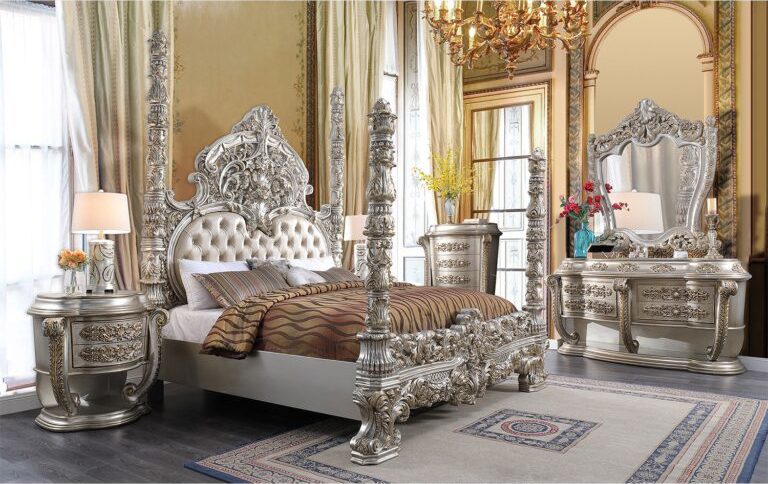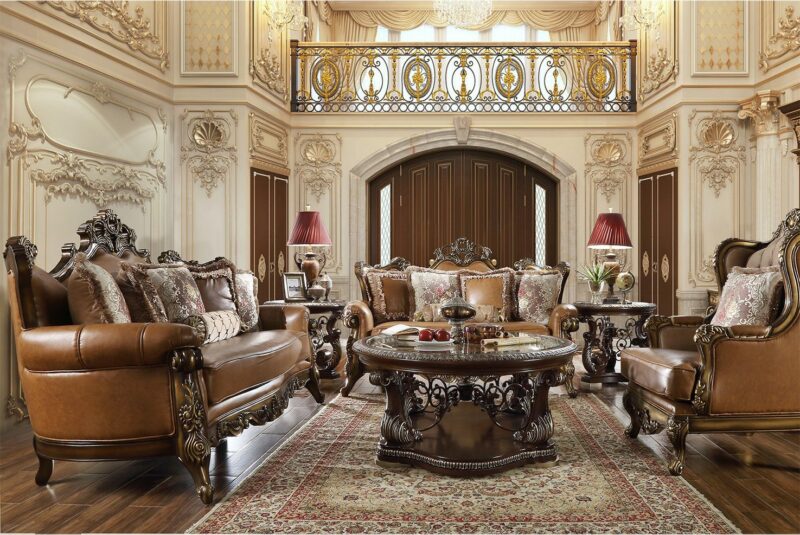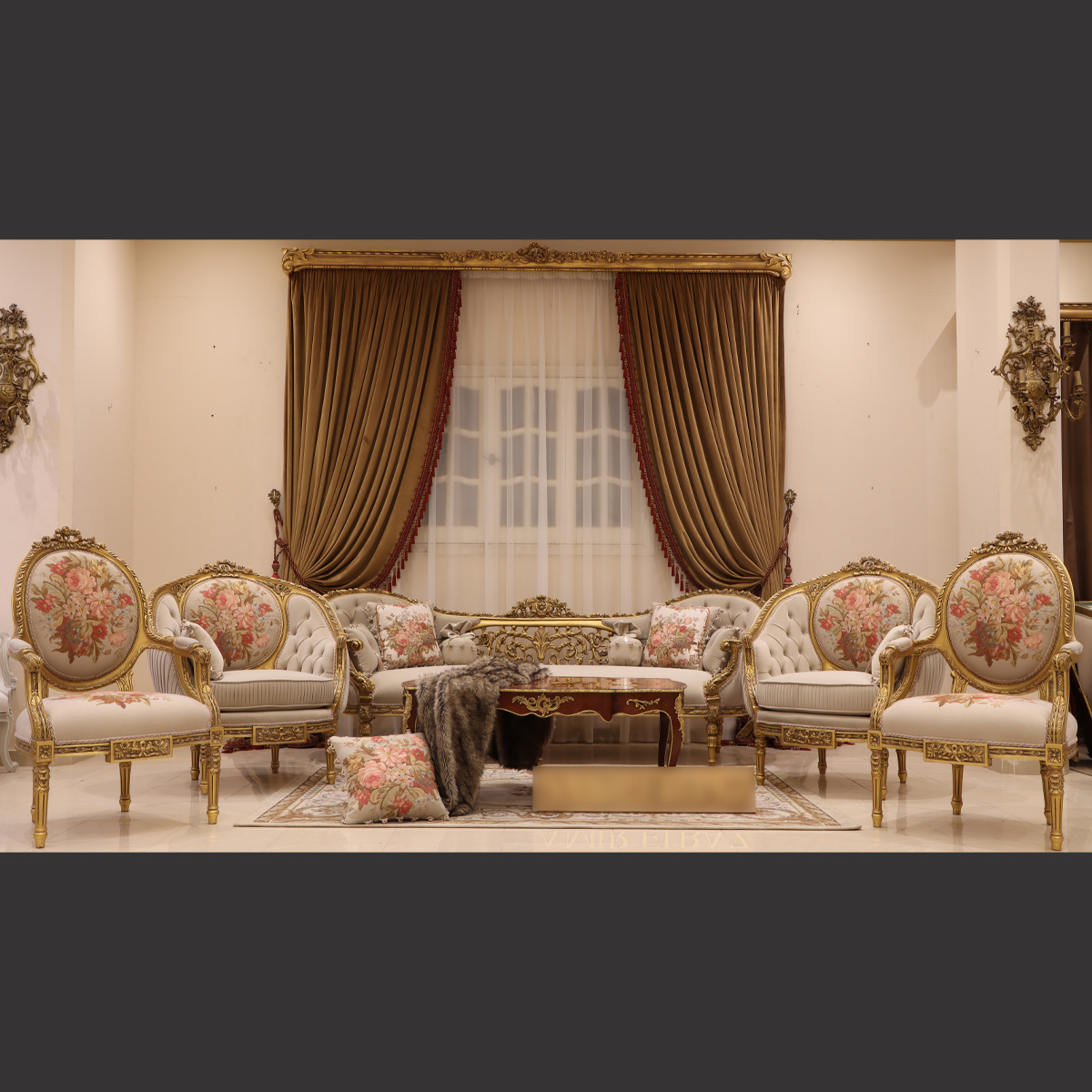Blog
Victorian vs. Baroque Furniture: What Sets Them Apart?

Victorian vs. Baroque Furniture???
Victorian and Baroque furniture are both known for their opulence, intricate detailing, and luxurious appeal. However, these two styles originate from different historical periods and exhibit distinct design philosophies. Whether you’re a collector, interior designer, or a luxury furniture enthusiast, understanding the differences between Victorian and Baroque furniture can help you make informed decisions when curating a sophisticated interior.
Historical Background
Baroque Furniture (17th-18th Century): Emerging in the early 17th century during the reign of Louis XIV in France, Baroque furniture was deeply tied to the Counter-Reformation movement. The Catholic Church encouraged this grandiose style to inspire awe and reinforce its power. Baroque furniture quickly spread across Europe, gaining prominence in Italy, Spain, and parts of Germany. Each region added unique elements: Italian Baroque emphasized flowing curves and artistic detail, French Baroque highlighted symmetry and regal ornamentation, while Spanish Baroque leaned heavily on darker woods and heavy ironwork. The opulence of Baroque furniture reflected the wealth and status of royalty and aristocrats during this period.
The Baroque period reached its peak in the late 17th century but gradually transitioned into the Rococo style in the early 18th century, which retained decorative elements but embraced a lighter, more playful aesthetic.
Victorian Furniture (19th Century): The Victorian era, spanning from 1837 to 1901 during Queen Victoria’s reign, marked a period of cultural transformation fueled by the Industrial Revolution. Mass production techniques enabled furniture to become more accessible to the growing middle class, yet handcrafted details remained a hallmark of quality Victorian pieces.
This period saw an eclectic mix of design influences, including Gothic Revival, Rococo Revival, and Renaissance Revival. Wealthier Victorians often filled their homes with elaborate furniture, rich fabrics, and decorative accessories, reflecting their social aspirations. The rise of British colonial influence also introduced exotic materials and patterns into Victorian design, adding further complexity to this diverse style.
During the later part of the Victorian era, the Eastlake Movement emerged as a reaction to the excessiveness of earlier Victorian designs. This movement favored simpler geometric patterns, straight lines, and a focus on craftsmanship — a contrast to the ornate detailing common in traditional Victorian furniture.
Design Elements & Characteristics
Baroque Furniture
Baroque furniture is known for its elaborate ornamentation, characterized by bold, dramatic, and highly decorative elements. Some key features include:
- Intricate Carvings: Deep, high-relief carvings of floral motifs, acanthus leaves, scrolls, cherubs, and mythological creatures.
- Gilded Finishes: Gold leaf was often applied to carvings and frames to enhance the sense of opulence.
- Symmetry & Grandeur: Baroque designs often emphasized grand proportions, symmetrical patterns, and theatrical presentation.
- Curved and Sculptural Forms: Bold curves, serpentine shapes, and cabriole legs added to the furniture’s extravagant appearance.
- Inlays and Marquetry: Use of exotic wood veneers, mother-of-pearl, and ivory inlays for additional richness.
- Dramatic Contrast: Dark woods like walnut or ebony contrasted with gold embellishments, creating a sense of depth and luxury.
 Victorian Furniture
Victorian Furniture
Victorian furniture, while still ornate, presents a slightly more refined and varied approach to decoration. Notable detailing includes:
- Elaborate Woodwork: Intricate hand-carved floral patterns, turned spindles, and decorative moldings were common.
- Tufted Upholstery: Many Victorian pieces, especially seating furniture, featured deep-buttoned tufted upholstery in luxurious fabrics like velvet and brocade.
- Detailed Inlays: While not as dramatic as Baroque, Victorian furniture often incorporated marquetry, parquetry, and mother-of-pearl inlays.
- Curved and Straight Elements: The Victorian era saw a combination of Rococo-style curves and Gothic-style pointed arches in furniture design.
- Dark, Polished Finishes: Mahogany, rosewood, and walnut were favored woods, often finished with a high-gloss polish to enhance their richness.
- Ornate Hardware: Brass and cast-iron drawer pulls, escutcheons, and decorative keyholes added to the overall aesthetic.
Explore Victorian Bedroom Sets
Baroque Furniture
Baroque furniture was crafted using the most luxurious and durable materials available at the time. The construction was often highly ornate and labor-intensive, with skilled artisans carving intricate details by hand.
- Wood Types: Commonly used woods included walnut, oak, mahogany, and ebony, often left dark or enhanced with gilding.
- Gilding and Gold Leaf: Many Baroque pieces were covered in gold leaf to emphasize their regal aesthetic.
- Marquetry and Inlay Work: Baroque furniture frequently featured elaborate inlays made from exotic woods, mother-of-pearl, ivory, and tortoiseshell.
- Marble and Stone: Marble tabletops were often incorporated, adding to the grandeur of the furniture.
- Hand-Carved Details: Skilled artisans crafted deep relief carvings, often depicting religious themes, mythological figures, or floral motifs.
- Iron and Bronze Accents: Ornate metal details such as cast-bronze mounts and wrought-iron reinforcements were commonly used.
Victorian Furniture
Victorian furniture, while still luxurious, embraced the advancements of the Industrial Revolution, allowing for a combination of handcraftsmanship and machine production.
- Wood Types: Mahogany, rosewood, and walnut were the most popular choices. Some later Victorian pieces also used oak and pine for affordability.
- Upholstery: Victorian furniture introduced a greater emphasis on comfort, with upholstery featuring rich fabrics like velvet, brocade, and damask.
- Mass Production Influence: Unlike Baroque furniture, which was entirely handcrafted, Victorian furniture saw elements that were machine-produced, making elaborate designs more accessible.
- Veneering and Finishing: Thin wood veneers were often applied to furniture surfaces, giving the appearance of exotic wood while conserving materials.
- Iron and Brass Hardware: Ornate brass or cast-iron handles, hinges, and keyholes added decorative appeal.
- Tufting and Padded Seating: The use of deep-button tufting in sofas and armchairs became a signature element of Victorian furniture.
Explore Victorian King Bedroom Sets
Silhouette & Shape
- Baroque: Bold, exaggerated curves and grand proportions. Furniture pieces often had cabriole legs, scalloped edges, and dramatic scrollwork.
- Victorian: More varied in form, with influences from Gothic (pointed arches), Rococo (curved legs), and Eastlake (simpler, geometric designs). Victorian furniture could be either ornate or more practical, depending on the influence.
Cultural Influence and Symbolism
- Baroque Furniture: This style was created to impress and emphasize power. Originating in palaces and grand churches, Baroque pieces were designed to project wealth and social status. Rich materials, ornate carvings, and bold proportions reflect its connection to royalty and religious opulence.
- Victorian Furniture: Victorian furniture reflects the values of its time — a rising middle class desiring comfort, elegance, and the ability to showcase their newfound affluence. The variety of styles within Victorian furniture allows it to appeal to both conservative and artistic tastes.
Explore Our Victorian End Tables
Practical Considerations in Modern Interiors
- Baroque: Best suited for spacious rooms with high ceilings where the dramatic curves, bold patterns, and gilded finishes can be appreciated without overwhelming the space.
- Victorian: Victorian pieces are versatile and can be incorporated into both traditional and eclectic interiors. Dark woods and elaborate carvings work well as statement pieces in living rooms, studies, and dining areas.

Victorian vs. Baroque Furniture
Key Tips for Styling with Victorian and Baroque Furniture
- Create a Statement Piece: Use one or two standout Baroque or Victorian pieces as focal points in a room to avoid visual clutter.
- Embrace Luxurious Fabrics: Pair Baroque furniture with rich fabrics like velvet, silk, and brocade. Deep jewel tones such as emerald green, royal blue, and ruby red complement the dramatic flair of Baroque designs. For Victorian spaces, opt for softer colors like muted gold, burgundy, and earthy tones.
- Incorporate Ornate Accessories: Chandeliers, ornate mirrors, and gilded picture frames enhance the elegance of both styles.
- Mix with Modern Elements: Combining Baroque or Victorian furniture with contemporary elements can create a striking contrast that feels fresh and sophisticated.
- Use Patterned Wallpapers and Rugs: Victorian spaces often feature floral or damask wallpapers, while Baroque designs thrive with bold, geometric floor patterns or richly woven carpets.
- Pay Attention to Scale: Baroque pieces tend to be larger and bolder; balance them with minimalistic surroundings to prevent the space from feeling overwhelmed.
Influence on Modern Luxury Interiors
Both Baroque and Victorian furniture styles continue to inspire contemporary luxury interiors. Designers incorporate elements from these historic styles to create opulent spaces that blend classical elegance with modern functionality.
- Baroque Influence: Modern luxury interiors often incorporate Baroque-inspired furniture with gilded finishes, ornate carvings, and grand proportions. Contemporary designers balance these dramatic pieces with minimalist elements to prevent overwhelming a space.
- Victorian Influence: Victorian-style furniture is frequently reimagined with modern materials and softer color palettes. Deep-buttoned tufted sofas, intricate woodwork, and vintage brass fixtures are common in today’s upscale homes, creating a blend of nostalgia and sophistication.
- Fusion of Styles: Many luxury interiors mix Baroque and Victorian elements with Art Deco, Neoclassical, or contemporary designs, creating a timeless and elegant aesthetic that appeals to a modern audience.
Restoration and Preservation
When restoring Victorian or Baroque furniture, it’s important to use appropriate materials and techniques to maintain authenticity. For example:
- Baroque Furniture: Gilded detailing may require specialized gold leaf restoration techniques. Professional restorers often use traditional methods to retain the piece’s original grandeur.
- Victorian Furniture: Victorian pieces often benefit from careful wood refinishing and reupholstering to revive their original charm. Using authentic materials such as period-correct fabrics can enhance their aesthetic and historical value.
Preservation Tips: Avoid placing antique furniture in direct sunlight or humid environments to prevent fading, warping, or cracking. Regular dusting with a soft cloth and periodic waxing for wooden surfaces can help maintain their beauty.
Explore Victorian Living Room Sets
Conclusion
While both Baroque and Victorian furniture styles exude luxury and artistry, their origins and design philosophies set them apart. Baroque furniture is bold, extravagant, and theatrical, whereas Victorian furniture is intricate, elegant, and a fusion of various historical influences. Understanding these differences can help you curate a refined space that aligns with your aesthetic preferences.
Are you looking to add a touch of either Victorian or Baroque elegance to your home? Explore our exclusive collection at Mobilia Cleopatra and discover furniture that embodies timeless sophistication.

